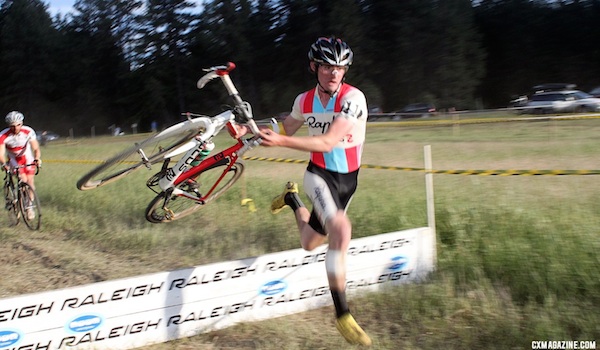 The endless number of accelerations, steep ride up’s and run up’s, barriers, as well as the intensity of cyclocross racing all add up to create a sport within cycling that is very demanding on your legs. Road or mountain bike fitness is great for coming into a season of cyclocross but adding in a variety of workouts will help you to better adapt to the racing as well as to set you up to do well. Cyclocross races are short so the training for it doesn’t have to be long either. You can do a variety of workouts which are hard and intense but also fun in a short amount of time a few times a week.
The endless number of accelerations, steep ride up’s and run up’s, barriers, as well as the intensity of cyclocross racing all add up to create a sport within cycling that is very demanding on your legs. Road or mountain bike fitness is great for coming into a season of cyclocross but adding in a variety of workouts will help you to better adapt to the racing as well as to set you up to do well. Cyclocross races are short so the training for it doesn’t have to be long either. You can do a variety of workouts which are hard and intense but also fun in a short amount of time a few times a week.
Accelerations
Cyclocross consists of a lot of turns which require you to slow and then reaccelerate out of each one of them. If you are only used to riding at a steady effort and accelerating a couple of times each ride, then after a few laps of a ‘cross race, your legs are going to ache. The best way to prepare for this is simply doing a lot of accelerations. If you are not yet on your ‘cross bike you can still do these on a road bike.
There are a number of intervalshttps://www.ilovebicycling.com/cyclocross-tips/ you could do but the easiest is to do 30 second intervals. Accelerate in the saddle for five to ten seconds alternating in and out of the saddle and then spinning easy for the remainder of the thirty seconds. Then when thirty seconds is up, do it again. Start with five minutes of this and build to twenty minutes. If you are on a ‘cross bike you can set up a mini-course that requires you to accelerate every thirty seconds.
Running
There is not a lot of running in ‘cross but the little bit that there is can really hurt you if your legs aren’t ready for it. The only real times that you’re running are when you have to get over barriers or up a steep hill, both of which put a lot of stress on your legs. The best way to start getting that stress is to do a short five to ten minute run where you run easily for thirty seconds and then walk for a minute. Build to one minute on, one minute off, and after about a week of doing this every day you can do the whole ten minutes. Once you can do this your legs are ready to practice the harder stuff.
Barriers
Assuming you already know how to dismount and mount your bike properly, set up two barriers about two meters apart and about 40cm high. Ride into it, dismount, run over it, remount and loop around and do it again. When you first start, do it slowly making sure your technique is good and then gradually increase your speed. Once you are up to speed, do five to ten of them with about thirty seconds between each one.
Run-Ups
Next are the dreaded run-ups where the hill is too steep and/or technical to ride up. Find a steep hill that is too steep to ride up and takes about ten to twenty seconds to run up. In most races you probably won’t encounter run-ups quite this long but simulating them longer will ensure your legs are ready. Ride into the hill, dismount, shoulder the bike, run up the hill as hard as you can and then remount your bike at the top. Ride around easy for a couple of minutes and then do it again. Build from three to eight.
Ride-Ups
Some steep sections that some run up can actually be ridden but doing so requires practice. Riding a super steep climb necessitates a lot of strength that needs to be built. Even if you can do it once your legs are going to feel it after during the rest of the race. Like the run-ups you want to get your legs used to doing the effort over and over again.
Find a steep climb that you can barely ride up but you can still ride it without having to unclip. Sprint into and up it. Technique along with power is going to be what gets you up it efficiently. You will need to practice a lot to be able to do it in a race but once you’re good it can save you a lot of time each lap. Like the run-ups, start with three and build to eight, riding around easy in between each.
Overall Fitness
Along with needing specific fitness for ‘cross, having a solid base of fitness is essential. Ideally you come into ‘cross season with a bit of road or mountain fitness. If not, build your riding into longer and longer rides incorporating some intensity and then do these workouts to get ‘cross specific fitness. When you do come into the ‘cross season from a road or mountain season, it’s important to take a little bit of rest before you dive right in.
You will be tempted to keep racing with your fitness but if you do, after a weekend or two you will burnout and not have the intensity and drive to continue the ‘cross season in most cases. Instead, take a week or two easy and recover. You will start the ‘cross season fresh with these workouts which will have you feeling good in your races and most importantly, lessen the likelihood of injury.
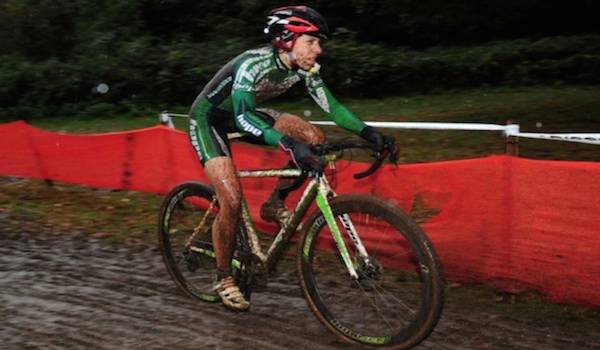
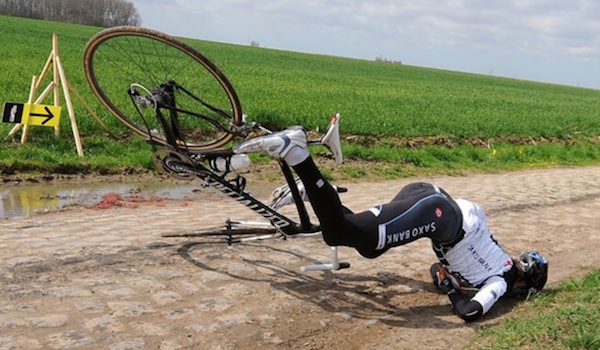 Whether you are a five year old kid learning to ride a bike or a Tour de France veteran, bike riding involves risk and how we handle that risk is what keeps us coming back for more or taking up another sport entirely. Risk, in the simplest sense, is how likely a bad outcome is to happen. Some aspects of bike riding, such as downhill mountain biking, bring a high level of risk but it’s that high level of risk that creates the thrill, rush, and fun. It can have a price though and for some, it’s a risk worth taking. For other aspects of riding, such as road riding, the level of risk can still be high but steps can be taken to lower that level of risk. Another element of risk in cycling is how comfortable you are in the same risky situation. As your riding improves, not only will you be a better bike handler but you will also be more comfortable being in those risky situations as you know you have the skills to avoid crashing.
Whether you are a five year old kid learning to ride a bike or a Tour de France veteran, bike riding involves risk and how we handle that risk is what keeps us coming back for more or taking up another sport entirely. Risk, in the simplest sense, is how likely a bad outcome is to happen. Some aspects of bike riding, such as downhill mountain biking, bring a high level of risk but it’s that high level of risk that creates the thrill, rush, and fun. It can have a price though and for some, it’s a risk worth taking. For other aspects of riding, such as road riding, the level of risk can still be high but steps can be taken to lower that level of risk. Another element of risk in cycling is how comfortable you are in the same risky situation. As your riding improves, not only will you be a better bike handler but you will also be more comfortable being in those risky situations as you know you have the skills to avoid crashing. As rides start to get longer and longer, stops mid-way for food and water are going to become more frequent as well as important. The coffee shop is a great place to stop for a while and have great conversation over a few brews but during training rides you want to be in, out, and on your way in a timely manner. You also want to get what you need to fuel properly for the remainder of the ride. Knowing what you want to eat and drink prior to going into a store will help prevent you from milling around looking at every possibility which we’ve all done before, especially if we’re already a bit depleted from the ride.
As rides start to get longer and longer, stops mid-way for food and water are going to become more frequent as well as important. The coffee shop is a great place to stop for a while and have great conversation over a few brews but during training rides you want to be in, out, and on your way in a timely manner. You also want to get what you need to fuel properly for the remainder of the ride. Knowing what you want to eat and drink prior to going into a store will help prevent you from milling around looking at every possibility which we’ve all done before, especially if we’re already a bit depleted from the ride.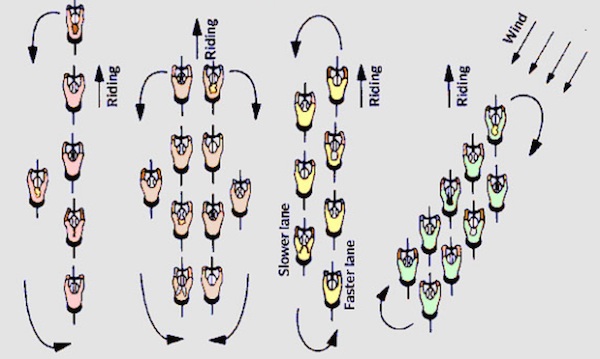 Riding in a group can bring a lot of benefits that you can’t get while riding on your own. A paceline is how a group of riders rotate through trading spots riding the front in the wind. Riding in this way is the fastest and the most efficient way down the road. However, knowing how to ride in a paceline is imperative as if you can’t, you not only pose a risk to yourself but others as well due to the possibility of crashing. Riders in the group can also give you pointers as you get the feel for how things roll.
Riding in a group can bring a lot of benefits that you can’t get while riding on your own. A paceline is how a group of riders rotate through trading spots riding the front in the wind. Riding in this way is the fastest and the most efficient way down the road. However, knowing how to ride in a paceline is imperative as if you can’t, you not only pose a risk to yourself but others as well due to the possibility of crashing. Riders in the group can also give you pointers as you get the feel for how things roll.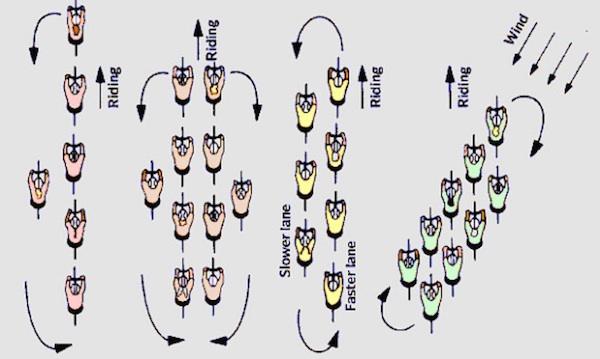 Two things that slow you down in cycling are uphill’s and wind. Some look to avoid them while others embrace them. Riding in the wind can be a drag but it’s going to happen so you should know how to get through it the most efficiently. The wind can also have some good benefits, one being that you can ride a lot faster than you otherwise could when it’s at your back. When you are in a group riding into a headwind you can actually get more of a draft behind the other riders allowing you to pedal with much less effort. A side wind can give you a real advantage if you know how to ride in it as the other riders that you’re with will have to pedal that much harder because they are poorly positioned. As with anything in cycling, the more you do it the better you’ll be at it.
Two things that slow you down in cycling are uphill’s and wind. Some look to avoid them while others embrace them. Riding in the wind can be a drag but it’s going to happen so you should know how to get through it the most efficiently. The wind can also have some good benefits, one being that you can ride a lot faster than you otherwise could when it’s at your back. When you are in a group riding into a headwind you can actually get more of a draft behind the other riders allowing you to pedal with much less effort. A side wind can give you a real advantage if you know how to ride in it as the other riders that you’re with will have to pedal that much harder because they are poorly positioned. As with anything in cycling, the more you do it the better you’ll be at it.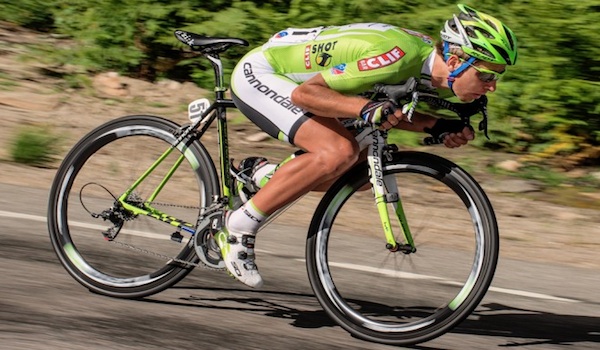 Descending is a mysterious art form, which, if mastered can shave minutes off your times. Some riders seem to possess an innate ability to drop like a stone from the side of huge mountains without any trace of fear – others are not so blessed. Recent summit finishes in the Vuelta España have shown that, even for the best climbers,
Descending is a mysterious art form, which, if mastered can shave minutes off your times. Some riders seem to possess an innate ability to drop like a stone from the side of huge mountains without any trace of fear – others are not so blessed. Recent summit finishes in the Vuelta España have shown that, even for the best climbers, 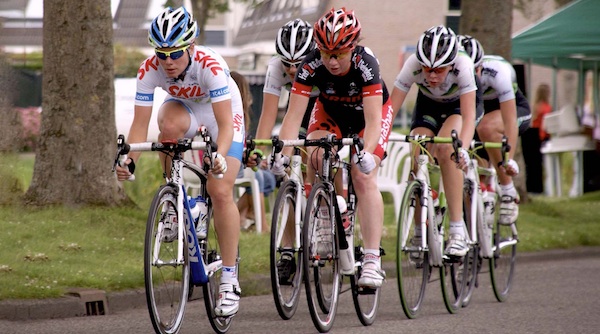 When you are out in the middle of nowhere and have exhausted all of your tubes, traffic can be a life saver to get you home. When you’re not in the middle of nowhere and there is traffic, it can be a pain that detracts from the joy of riding. The thing with most drivers is that they are just trying to get from point A to point B. They’re not out to hit you or give you a hard time. If you give them the proper visibility and space, they will avoid you and let you go on your way safely. A smaller percentage of drivers believe that the road is for them and them only. You are in their way no matter what and they are going to give you a hard time at any chance they get. It’s not you, it’s them. Knowing how avoid conflict as well as what to do if there is a problem will allow you to keep your cool in the heat of the moment.
When you are out in the middle of nowhere and have exhausted all of your tubes, traffic can be a life saver to get you home. When you’re not in the middle of nowhere and there is traffic, it can be a pain that detracts from the joy of riding. The thing with most drivers is that they are just trying to get from point A to point B. They’re not out to hit you or give you a hard time. If you give them the proper visibility and space, they will avoid you and let you go on your way safely. A smaller percentage of drivers believe that the road is for them and them only. You are in their way no matter what and they are going to give you a hard time at any chance they get. It’s not you, it’s them. Knowing how avoid conflict as well as what to do if there is a problem will allow you to keep your cool in the heat of the moment.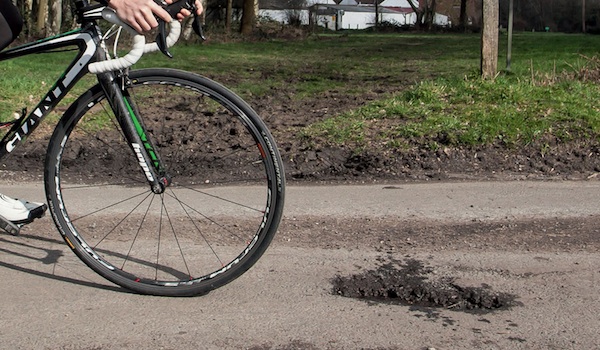 Road riding compared to mountain biking or gravel road riding can be smooth and straight forward; so much so you could practically take a nap sometimes. However, in most parts of the country, roads can take a beating and be rough and full of potholes. If they are smooth you still have to watch out for things like manhole covers and railroad tracks. Knowing what to do when you encounter these will save more than just your skin. You not only need to know what to do but also be able to react to the hazard without even thinking about it so practice is necessary.
Road riding compared to mountain biking or gravel road riding can be smooth and straight forward; so much so you could practically take a nap sometimes. However, in most parts of the country, roads can take a beating and be rough and full of potholes. If they are smooth you still have to watch out for things like manhole covers and railroad tracks. Knowing what to do when you encounter these will save more than just your skin. You not only need to know what to do but also be able to react to the hazard without even thinking about it so practice is necessary.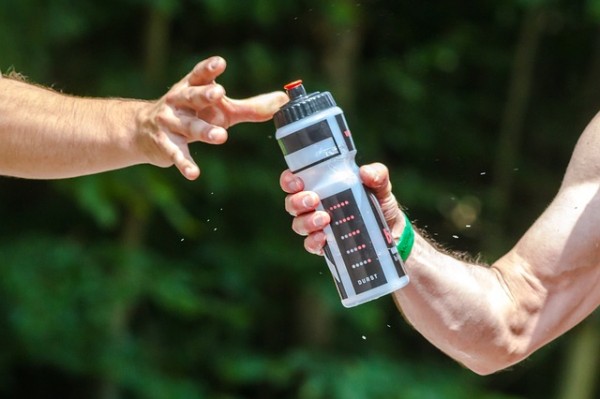 Your water bottle is going to be an ever-present fixture of your rides and thus is going to see an awful lot of use over the years. Whether you’re just filling it with water of you prefer sports drinks, it is important to make sure that it is always clean before you use it again, else it will simply become a breeding ground for bacteria and may lead to you contracting an illness that keeps you off your bike.
Your water bottle is going to be an ever-present fixture of your rides and thus is going to see an awful lot of use over the years. Whether you’re just filling it with water of you prefer sports drinks, it is important to make sure that it is always clean before you use it again, else it will simply become a breeding ground for bacteria and may lead to you contracting an illness that keeps you off your bike.